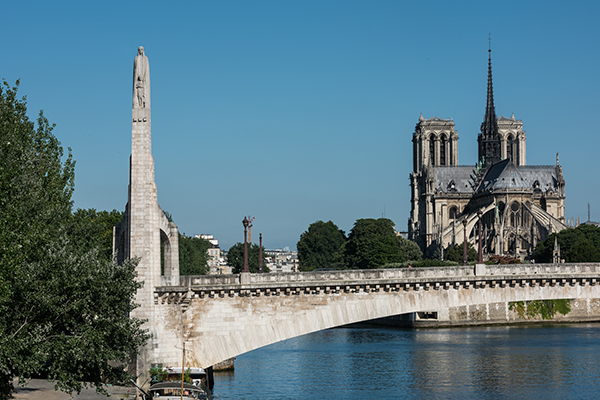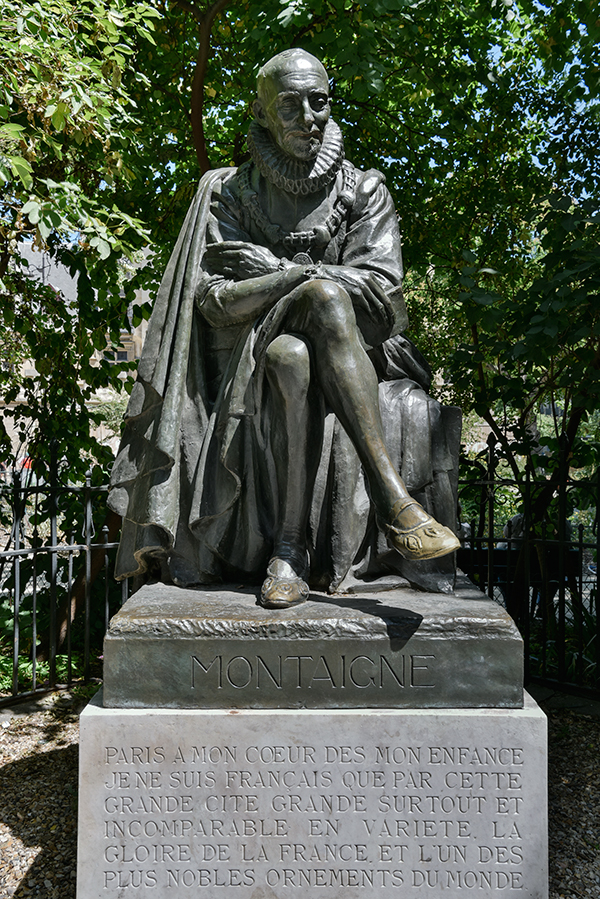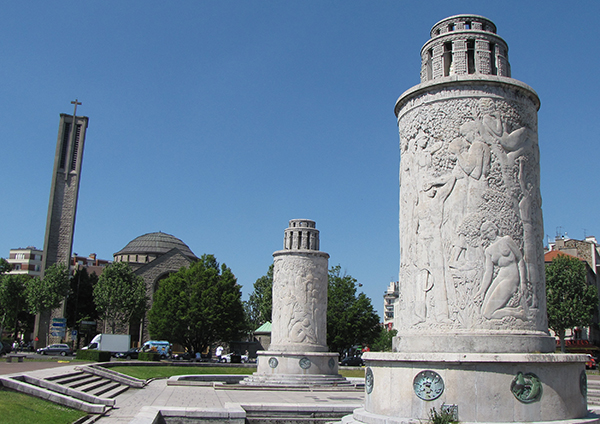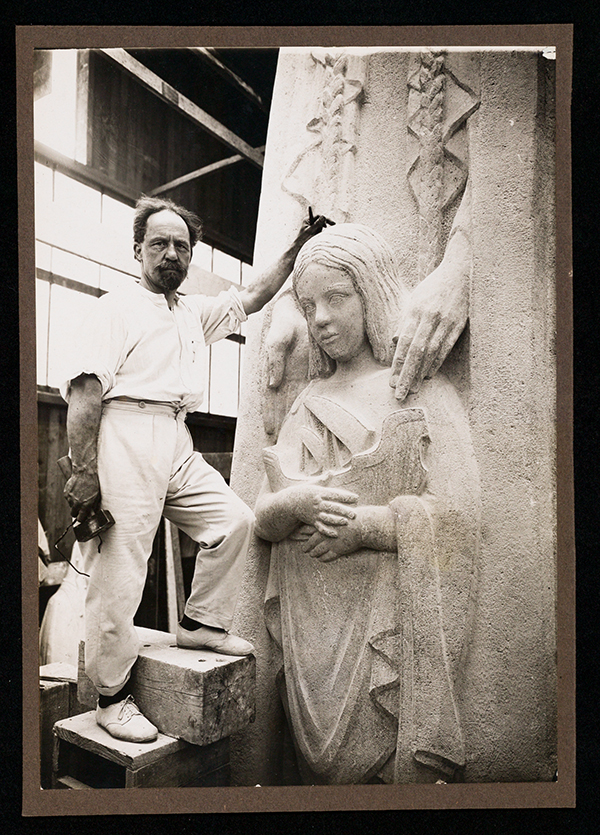Here’s a famous sculpture that everyone recognizes, Christ the Redeemer in Rio, but do you know who created it?
Here’s a bridge in the center of Paris with a sculpture of the patron saint of Paris, Genevieve, and a little girl holding a boat representing the city of Paris, we’ve seen it many times, but do we know who created it?
This well-known statue of Michel de Montaigne on the rue des Ecoles, you’ve walked past it many times and enjoyed his benevolent gaze, but who is the sculptor?
This is the Porte de Saint Cloud in Paris 16th which we at FUSAC see every day on the way to the office. It has been just renovated. But do we know who designed these fountains covered with bas-reliefs which depict Paris, the Seine and all the goodness of Ile de France?
How about the magnificent bronze doors on the Faculté de médecine in the 6th arrondissement or the monument to the fallen at Trocadéro?
The answer to all these is Paul Landowski. No one knows his name, but we recognize his work all over Paris (there are about 30 Landowski sculptures in Paris, which makes him one of the most represented artists) and around the world. Finally a museum has opened in Boulogne-Billancourt dedicated to his work. Landowski, was born in Paris, grew up in Algeria, then worked in Boulogne for more than 60 years. He’s a local and it is time we connected his name to his works. Landowski was a prolific sculptor working on both small statuary to monumental pieces, portraits to monuments. He was humanist, had strong belief in the sciences, art and humanity. He fought on the front lines during the battle of the Somme and vowed that once the war was over he would render homage to the fallen in art. « Ces morts, je les relèverai« . Thus one of the threads of his career was monuments to the victims of WWI. He created at least 30 of them. He was dedicated.
His art is marked by an steadfast dedication to a classic style that is intemporel. His works will never be out of style because he himself made sure that his designs were not just « decoration for a particular time period » such as the 1920s or 1930s. Landowski produced sculptures from before 1900 when he won the prestigious Prix de Rome until he died in 1961, thus traversing many art currents and yet his works remain iconic today unattached to a particular period. The widely-known works shown above date from 1924-56, but you’d never point them out as being from any particular trend.
His art is diverse from family or commissioned portraits, to Biblical subjects, oriental subjects such as fakirs and dancers, mythological and most of all humanist. He worked in the round and in relief. Landowski reveled in the technical challenges of his work as well such as figuring out how to create a sculpture so big it would still be visible when placed on a mountain top (Christ Redeemer) or how to make bas-relief still look proportional when viewed on a cylinder (fountains of the Porte de Saint Cloud). In the entrance to the museum three of Paul Landowski’s statues welcome the visitor. Most notable is the statue of David in Combat, which was awarded the Grand Prix de Rome. In the David two essential characteristics stand out: Landowski’s profound admiration for the wonders of the human body, and the power of his art. The museum’s bilingual explanation panels then lead the visitor through the smaller statuary section with many bronzes and on to the monumental section with works represented via plaster preparatory models and preparatory granite which allow the visitor to see how a sculpture is conceived from start to finish. Over 60 pieces are shown along with sketchbooks and a several small paintings. The museum is worthwhile visit to connect us to one of the greatest French sculptors who should be better known.
As a bonus the Museum of the city of Boulogne dedicated to the 1930s is in the same building and your ticket is valid for both.
Paul Landowski Museum/Museum of the 1930s (who graciously provided many of these photos)
Open Tuesday-Saturday 11-18h
28 avenue André Morizet, Boulogne-Billandcourt
Metro Marcel Sembat on line 9 or Boulogne-Jean-Jaurès on line 10






